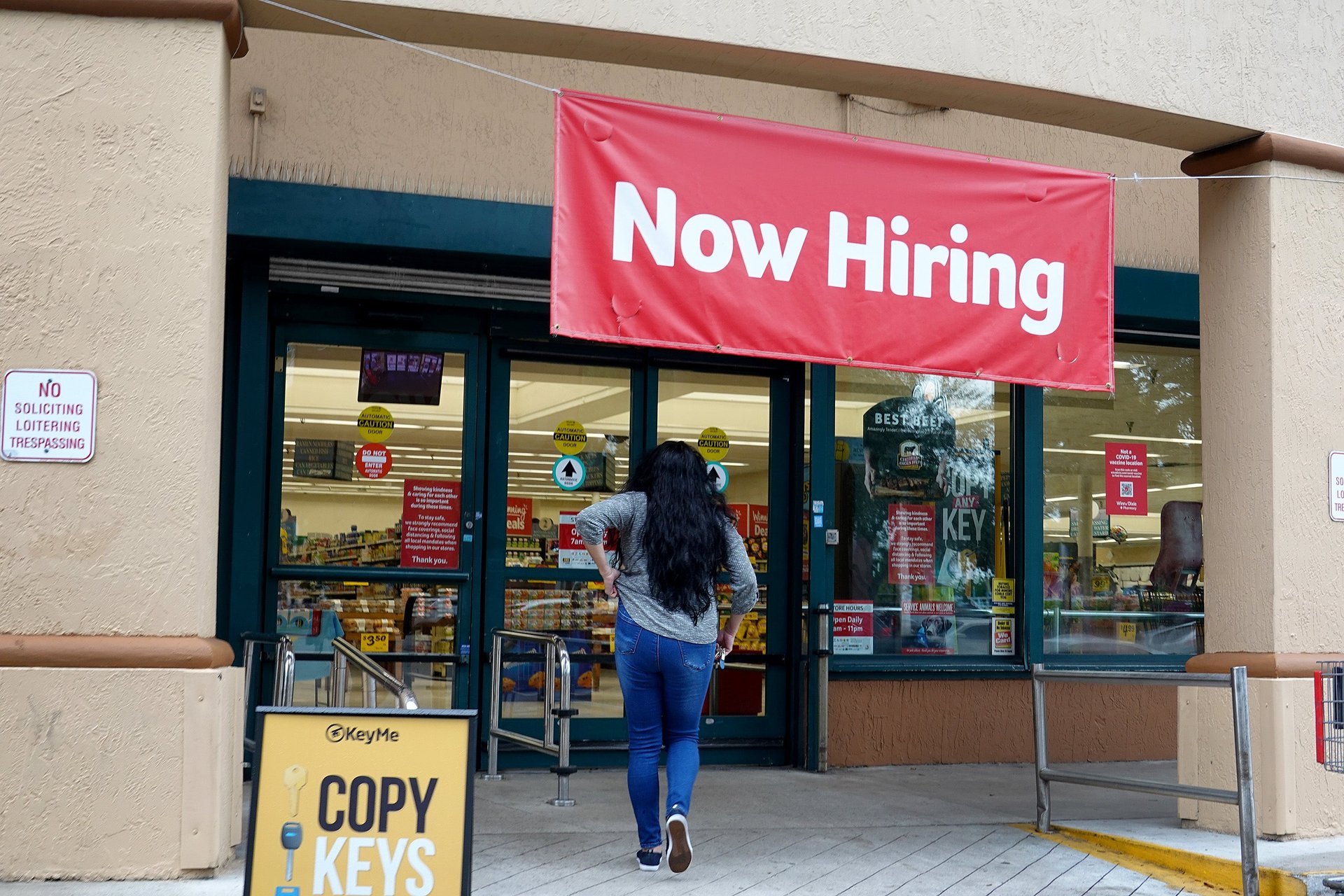April jobs report shows solid but slowed growth
Labor Department data pointed to steady jobs growth and stable unemployment — while tariffs and recession fears loom large

The already fragile U.S. economy came under further focus Friday morning with the release of the April jobs report, which showed slowed but solid growth. U.S. employers added 177,000 nonfarm jobs in April and the unemployment rate was unchanged at 4.2%, according to the report released by the Labor Department.
Suggested Reading
There’s little in the numbers to suggest that President Donald Trump’s tariffs took a substantial toll on the job market as of mid-April. The numbers are better than expected: Economists surveyed by Bloomberg estimated that employers added 130,000 jobs last month and expected the unemployment rate to remain steady, which it did (and which it has since May 2024).
Related Content
April’s numbers show hiring came back to Earth some after the unexpectedly high 228,000 jobs added in March (downwardly revised to 185,000). April’s jobs numbers are an improvement over the 114,000 average seen in January and February.
Still, job growth has stayed fairly steady lately, growing fast enough to keep up with the amount of people joining the workforce.
Wage growth last month, however, was much more muted amid the labor market cooling off. Average hourly earnings rose 0.2% in April, and wages are up 3.8% over the past year.
The biggest jobs sector was in manufacturing, which shed 1,000 jobs in April. And some signs of job-slashing measures from the Elon Musk-led Department of Government Efficiency (DOGE) showed up in the jobs data — federal employment declined 9,000 last month and is down 26,000 since January — but it doesn’t paint the full picture. Federal employees who took buyouts are still being paid by the government and therefore aren’t counted this month.
Meanwhile, though, state and local government more than made up for the drop in April, adding a combined 19,000.
Sectors such as healthcare, education, and professional services continued to show strength, contributing to the overall job growth.
The jobs report offers a snapshot of economic momentum as signs of strain grow across both public and private sectors — and it’ll provide a look into how the economy and labor market are being affected by tariff-related macroeconomic uncertainty. While most analysts didn’t expect a sharp slowdown in hiring this month due to the president’s trade policies, some warned that employers might be adjusting in anticipation of more costly conditions.
But for the most part, economists believe the surest signs of a tariff-related downturn will arrive in the second half of the year, as price hikes linked to the sweeping levies filter down.
The Federal Reserve, which has maintained interest rates at their highest levels in over two decades, is closely monitoring the report for guidance on inflation. For the most part, the numbers suggest the central bank can continue to be patient on rate cuts, especially with the risk Trump’s tariffs pose to inflation. The Fed remains prepared to respond to unexpected shifts in the labor market but wants to see tangible evidence of a weakening economy before making any big moves.
The labor data arrives just days after the Commerce Department reported a surprising 0.3% contraction in GDP for the first quarter — the first economic shrinkage since 2022. That decline was partially driven by a surge in imports ahead of Trump’s tariffs, which widened the trade deficit and weighed heavily on net exports.
Hiring in the private sector, already showing signs of fatigue earlier this year, has continued to lose steam. An ADP report showed that private-sector payrolls grew by just 62,000 in April, the smallest gain since July 2024. “Unease is the word of the day,” ADP’s (ADP) chief economist, Nela Richardson, said in a statement accompanying the report.